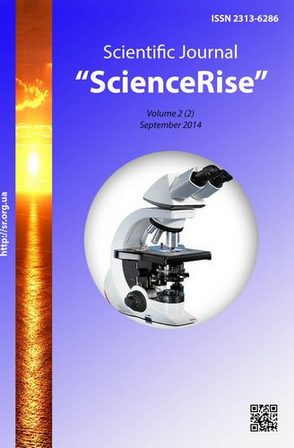Локальна система космічного моніторингу лімнологічних систем
DOI:
https://doi.org/10.15587/2313-8416.2014.27265Słowa kluczowe:
локальний моніторинг, спостереження, оцінка ризику, космічні знімки, ехограми рельєфуAbstrakt
Розглянуто роль локальної системи космічного моніторингу та екологічних ризиків. Результати космічного моніторингу та застосування інформаційно-аналітичних технологій, забезпечують оцінку динаміки морфометричних характеристик і просторового розподілу досліджуваних інтегральних гідроекологічних параметрів. Це забезпечить охорону навколишнього природного середовища, раціональне використання природних ресурсів та стійкий еколого-збалансований розвиток області.Bibliografia
Greeks, L., Krasovskii, G., Trofimchuk, A. (2007). Space monitoring of man-made land pollution by dust. Kiev: Scientific opinion, 219.
Krasovskii, G., Trofimchuk, A. (2009). Information Systems thematic geodata processing tasks in environmental monitoring and natural resources at the regional level. Materials meeting «of satellite technology and support of the management problems of Kharkiv», 65–68.
Kovalchuk, P. (2003). Modeling and forecasting environmental. Kiev: Cygnus, 208.
Trysnyuk, V. (2004). Ecology Husiatyn area. Ternopil: Ternohraf, 219.
Trysnyuk, V. (2013). Modeling of natural hydro-technical system. Ternopil State Technical University named after Ivan Puluj, 1, 205–213.
Adamenko, О., Mishchenko, L. (2000). Environmental audit areas. Tutorial. Ivano–Frankivsk: Torch, 342.
##submission.downloads##
Opublikowane
Numer
Dział
Licencja
Copyright (c) 2014 Василь Миколайович Триснюк, Тарас Васильович Триснюк

Utwór dostępny jest na licencji Creative Commons Uznanie autorstwa 4.0 Międzynarodowe.
Our journal abides by the Creative Commons CC BY copyright rights and permissions for open access journals.
Authors, who are published in this journal, agree to the following conditions:
1. The authors reserve the right to authorship of the work and pass the first publication right of this work to the journal under the terms of a Creative Commons CC BY, which allows others to freely distribute the published research with the obligatory reference to the authors of the original work and the first publication of the work in this journal.
2. The authors have the right to conclude separate supplement agreements that relate to non-exclusive work distribution in the form in which it has been published by the journal (for example, to upload the work to the online storage of the journal or publish it as part of a monograph), provided that the reference to the first publication of the work in this journal is included.

